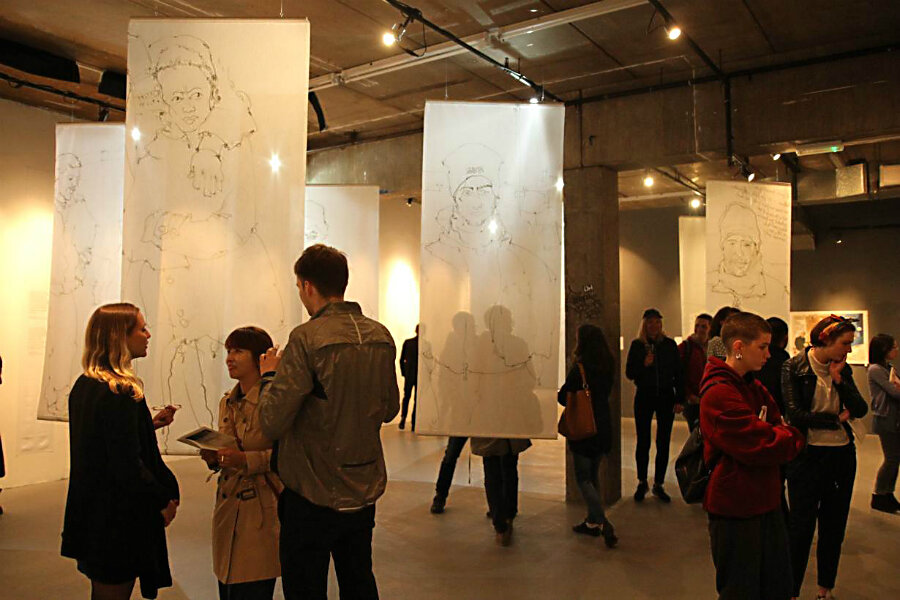With exhibit, migrants in Europe hope their experiences are better understood
Loading...
| London
When British art curator Sue McAlpine first visited makeshift migrant camps in Calais on France's northern coast, the sight of families living in muddy tents and children wearing flip-flops in the middle of winter saddened and horrified her.
McAlpine visited the camps in February to see if she could commission art and collect stories from migrants living in Calais for an exhibition in London – an idea she had while watching and reading media reports about the situation there.
"I was just so horrified by some of the reporting in the news that I felt it was really important for people who are refugees or migrants – either in Calais or in other camps – to have their voices heard," McAlpine told the Thomson Reuters Foundation.
Known as the "jungle," the squalid, unsanitary camp hosts around 4,000 migrants from poor and strife-torn regions in Africa and the Middle East, most of whom hope to reach Britain where a greater number of job opportunities and the more familiar English language are big draws.
McAlpine said sharing tea with migrant families inside their tents and hearing their stories cemented her decision to put together the London exhibition.
Still, she said she was initially embarrassed by the idea, as it seemed frivolous compared to the humanitarian help that aid workers offered.
"But at the same time, I felt this was the way I could help," McAlpine said. "Most of the people I spoke to really wanted to tell their story and they said, 'We want our voices heard, please tell people in the UK what it's like.' "
Organized by the Migration Museum Project and showcased in an east London gallery, McAlpine's exhibition, "Call me by my name: stories from Calais and beyond," features discarded lifejackets used by refugees who arrived in Greece by boat, as well as professional paintings and amateur photos by migrants in Calais.
In recent months, hundreds more migrants have made their way to Calais despite the bulldozing of part of their "jungle" camp in March, and despite extra port security aimed at stopping them from reaching Britain.
One refugee, whose photos feature in the exhibition as part of the "Welcome to Our Jungle" project, arrived in Calais from Eritrea in October last year.
"We crossed through the Sahara, Libya, Italy, France. It was a very difficult situation," he told the Thomson Reuters Foundation over the phone. "It was winter also, daily rain. The situation was very harsh.
"Maybe [the exhibition] will explain to some people what is happening, what the situation is like in Calais. We are just asking for freedom."
• Reporting by Lin Taylor, editing by Katie Nguyen. This story originally appeared on the website of the Thomson Reuters Foundation, the charitable arm of Thomson Reuters that covers humanitarian news, women's rights, trafficking, corruption, and climate change. Visit www.news.trust.org.







